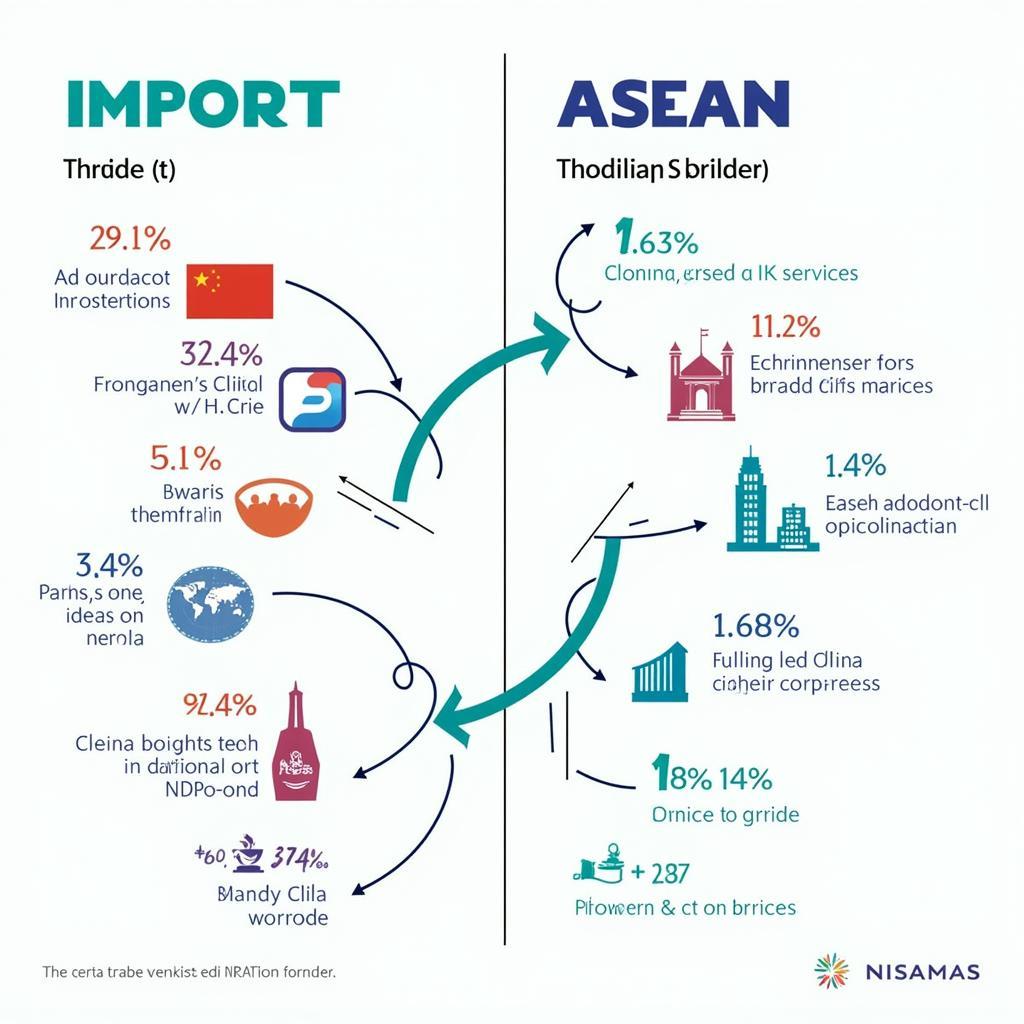The China Asean partnership has emerged as a cornerstone of the Asia-Pacific’s geopolitical and economic landscape. From trade and investment to security and cultural exchange, the relationship between China and the Association of Southeast Asian Nations (ASEAN) is multifaceted and constantly evolving.
Navigating a Complex History: The Foundation of China ASEAN Relations
China and ASEAN have a history interwoven with cooperation and tension. The Cold War era saw periods of strained relations, but the post-Cold War era ushered in a new phase. The 1990s witnessed the establishment of dialogue mechanisms and the signing of the Treaty of Amity and Cooperation in Southeast Asia (TAC) by China, signifying a commitment to peaceful coexistence and mutual benefit.
Economic Synergy: Trade and Investment as Pillars of China ASEAN Engagement
The economic realm is arguably where the China ASEAN relationship shines brightest. China has been ASEAN’s largest trading partner for over a decade, and ASEAN has risen to become China’s second-largest trading partner. The China-ASEAN Free Trade Area (CAFTA), launched in 2010, has significantly boosted bilateral trade, fostering economic integration and growth for both sides.
 China-ASEAN Trade Flows
China-ASEAN Trade Flows
Investment flows between China and ASEAN have also surged, with China emerging as a major investor in infrastructure, energy, and manufacturing within Southeast Asia. ASEAN countries, in turn, are attracted by China’s vast market and increasingly invest in China’s services and technology sectors.
A Balancing Act: Managing Differences in the South China Sea
Despite the strong economic ties, the South China Sea dispute remains a point of contention. Overlapping territorial claims and maritime rights have led to tensions and the need for careful diplomacy. Both China and ASEAN recognize the importance of maintaining peace and stability in the region.
[asean and the south china sea]
Dialogue mechanisms such as the ASEAN Regional Forum (ARF) and the East Asia Summit (EAS), where both China and ASEAN member states are active participants, provide platforms for addressing security concerns and promoting confidence-building measures.
The Rise of the Belt and Road Initiative: Shaping Connectivity in Southeast Asia
China’s ambitious Belt and Road Initiative (BRI) has further intertwined the economies of China and ASEAN. Infrastructure projects under the BRI framework, such as railways, ports, and energy pipelines, aim to enhance connectivity and facilitate trade between China and Southeast Asia.
While the BRI presents opportunities for development, it has also sparked debate about debt sustainability and strategic implications. ASEAN countries are carefully navigating their engagement with the BRI, seeking to maximize benefits while addressing potential risks.
People-to-People Ties: Strengthening the Foundation of China ASEAN Relations
Beyond government-to-government interactions, people-to-people exchanges play a crucial role in fostering understanding and goodwill between China and Southeast Asia. Educational collaborations, tourism, and cultural exchanges contribute to building bridges and strengthening ties between communities.
“Understanding each other’s cultures is paramount,” says Dr. Li Wei, a prominent scholar of China-ASEAN relations at Peking University. “When people interact, share experiences, and develop friendships, it creates a foundation of trust that transcends political differences.”
Looking Ahead: Navigating a Complex Geopolitical Landscape
The future of the China ASEAN relationship will be shaped by evolving geopolitical dynamics, particularly the US-China rivalry. ASEAN seeks to maintain its centrality and pursue a foreign policy based on dialogue and cooperation, while also safeguarding its interests.
[asean and china relationship]
China, as a rising global power, is increasingly engaging with Southeast Asia on its own terms. Balancing its interests with the aspirations of ASEAN member states will be crucial for maintaining a stable and mutually beneficial relationship.
Conclusion: Toward a Shared Future in the Asia-Pacific
The China ASEAN relationship is multifaceted and dynamic, characterized by both opportunities and challenges. As economic interdependence deepens and geopolitical complexities intensify, effective communication, mutual respect, and a commitment to win-win cooperation will be essential for navigating the path ahead.
[apa itu fta asean china]
The future of the Asia-Pacific region hinges on the ability of China and ASEAN to forge a sustainable and mutually beneficial partnership that promotes peace, stability, and shared prosperity.

